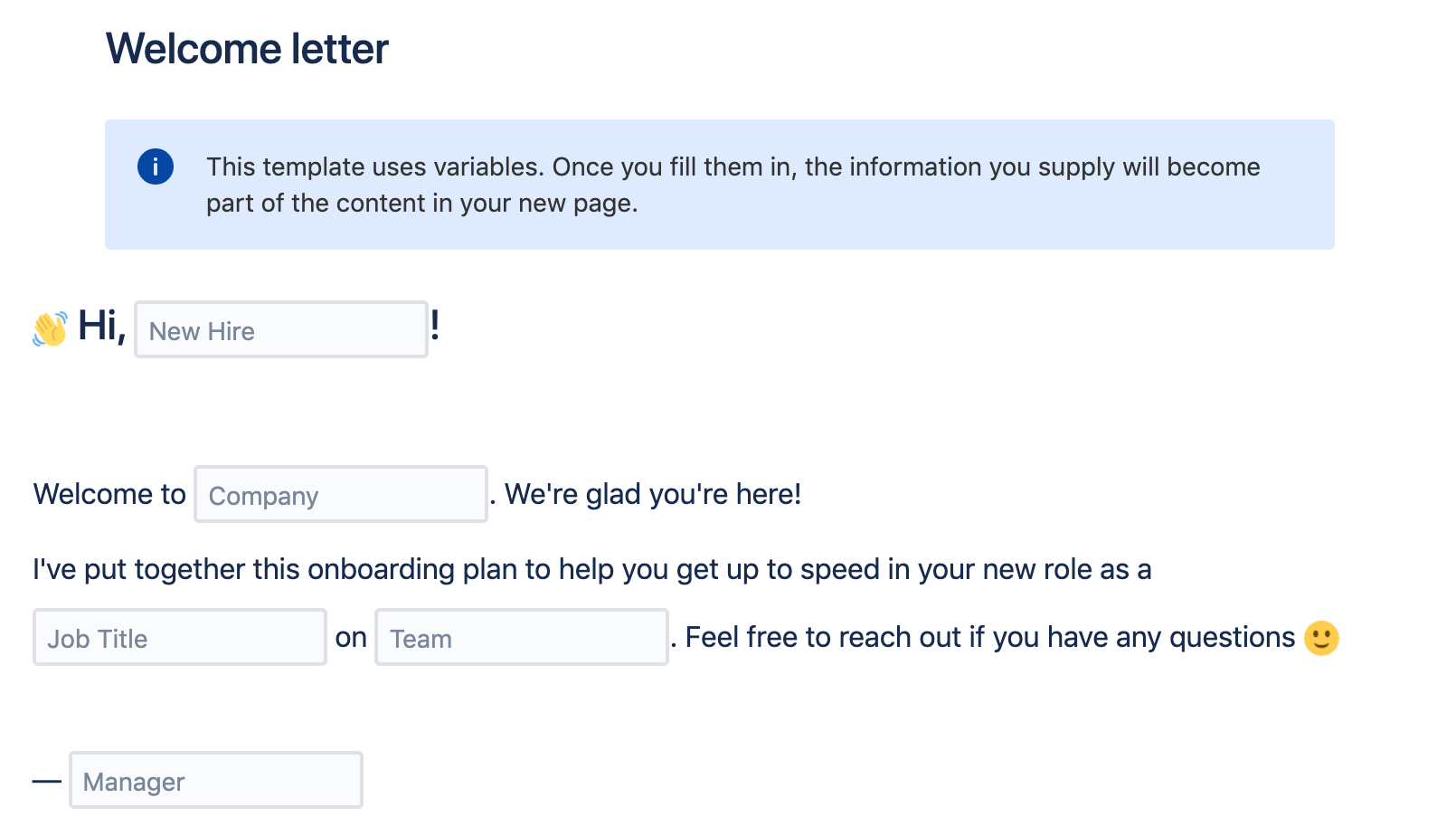How to Create a New Template in Confluence
Space administrators can create their own, custom page templates in Confluence Cloud . To learn about creating global page templates, see Create a global template.
Only space administrators can create or edit templates in Confluence Cloud . If you do not have the Admin permission for a space, you won't see the Templates link appear in the Look and Feel card when you go to Space Settings .
Help people discover custom templates by adding a description that will appear in the template gallery. To add or edit a template's description, go to to Space Settings and select Templates from the Look and Feel card, then select the pencil icon from the Description column.
Editing a template is a lot like editing a page – there are only a few small differences. Currently, there's no way to add images or attachments in templates. However, you can include variables, placeholder text, and labels. These features help people using these templates create rich and dynamic pages quickly.
Variables
When someone creates a page from a template with variables, they'll fill out a form with text fields or lists for each variable in the template. The information they provide will be added to the page automatically.
Add a variable to a template
You can only add variables to templates created with the new editor.
To add a variable:
-
Type /variable, then hit Enter.
-
Select the variable token, then select to edit it.
-
Enter a name for the variable, then select Text, Multi-line Text, or List.
-
Select Save.
Variables with the same name must have the same parameters, as Confluence treats these as copies of the same variable. When someone creates a page from a template with two or more copies of the same variable, the text they enter for one variable will appear everywhere that a copy of that variable appears.
Example
The example below shows a custom template with five text variables — one for "New Hire," one for "Company," one for "Job Title," one for "Team," and one for "Manager":

When someone creates a page from this template, they will be prompted to enter text into the fields where the variables appear:

When they're finished, the text they entered will appear on the page in edit mode.
Placeholder text
Use placeholder text to add instructions or sample text to pages created from a template. Placeholder text will only appear when a page is being edited – it's invisible to anyone who's viewing the published version.
Add placeholder text to a template
To add placeholder text to a template in the legacy editor:
-
Select +, then select Placeholder text.
-
Type in your placeholder text, then hit Enter.
To add placeholder text to a template in the new editor:
-
Type /placeholder where you want the text to appear, then hit Enter.
-
Type in your placeholder text, then hit Enter again.
Example
The example below shows a section of the Design Systems Template that comes with Confluence Cloud . The grey text is placeholder text:

When someone creates a page from this template, they will see grey placeholder text while they are editing the template. However, the text will not appear in view mode. This way, it is possible to provide instructions to the person creating a page from the template without any viewers of the page seeing them.
Labels
Add a label to a template to apply it to every page created from that template. This is helpful if you want to create a page properties report to keep track of similar pages.
Add labels to a template
To add labels to a template in the legacy editor:
-
Select the tag icon next to the breadcrumb.
-
Enter labels into the box, separated by the Space key.
-
Select Add.
-
Select Close.
To add labels to a template in the new editor:
-
Select ••• > Add labels.
-
Enter labels into the box, separated by the Space key.
-
Select Add.
-
Select Close.
Example
See Create a custom report for several examples of templates with labels.
How to Create a New Template in Confluence
Source: https://support.atlassian.com/confluence-cloud/docs/create-a-template/
0 Response to "How to Create a New Template in Confluence"
Post a Comment